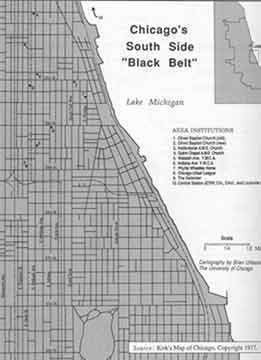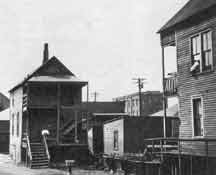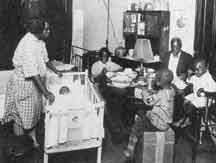
Map of Chicago's South Side
In Chicago, the migrants also faced opposition from the older black settlers. Neither blacks nor whites wanted the migrants to move to Chicago. Until World War I, northern employers were unwilling to hire African American workers because of the great influx of immigrants from Europe. The U.S. tightened its policy on immigration, so white employers were forced to open to African Americans.
The labor shortage in the north, during the war, prompted the first southern migration. The Delta Central Railroad became a primary means of migration for the migrants. They traveled in families and as individuals to the north,where upon their arrival they were faced with a very different life from the one they had left.


